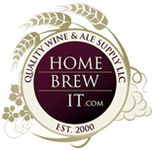Q: What recommendations do you have on storing your bottled wines?
A: Bottled wines are dramatically affected by the environment they are stored in. In fact, proper storage conditions are so important in ensuring that your wine is at peak quality when opened, they should be considered the last unwritten step in the winemaking process.
Some wines are more susceptible to poor storage conditions. Generally, white wines - particularly off-dry wines and champagne - are frailer than reds. Grape variety can also make a difference; for example, Cabernet Sauvignon wines are generally more resilient than Pinot Noirs. However, no matter what the wine, it always pays to minimize the risks associated with bottle storage:
Temperature:
Constant temperature is the key. By causing the wine inside the bottle to expand and contract, swings in temperature rapidly ruin bottled wine. Ideal cellar temperature is 45 - 55 °F (7 - 13 °C). At lower temperatures, maturation is slowed, though more complexity is allowed to develop. Wine could be safely stored to within a degree or two of freezing, but it would take decades to develop. On the other hand, wines can be stored at up to 68 F, where they will mature quite rapidly. Higher temperatures than this will quickly damage the wine.
Light:
Sunlight and ultraviolet light (ie. fluorescent lamps) are as bad for wine as excessive heat, but are problems usually much easier to overcome. Though most wines are protected to some degree by colored glass bottles, place wines in areas away from direct light or cover them with a blanket.
Humidity:
Some degree of humidity is beneficial for long term storage, to ensure that the exposed end of the cork does not dry out and allow oxygen into the bottle. Beware of air conditioners, as they actually suck moisture out of the air. Ideally, relative humidity should be between 60 - 75%. Humidity higher than that encourages mould growth in your storage area (not to mention label deterioration!).
Movement:
Wine does not take well to constant movement or vibration (particularly if there is sediment present), thus a secure storage space is a must. Don't put your bottles next to the washing machine, or in a storage area where they will have to be moved often to reach other items. Secure storage should also mean storing bottles horizontally, allowing constant contact of the wine with the cork, preventing the cork from drying out and letting air in.
A simple check of all environmental influences in or near your storage area is advised. For example, areas such as garages or attics, which seem cool, may be subject to temperature fluctuations due to lack of insulation. A good option is to insulate a small room, large cupboard or area under the stairs, void of any heat sources like a water pipe or a boiler. Periodically checking the area with a thermometer is a good idea. A good way to do this is to put a floating thermometer in a one litre jug of water, and leave it covered in the space for 24 hours. This will let the water stabilize to the ambient temperature, and give you an accurate reading.
Allowing for the ageing of your finished wine in an environment which helps to preserve its finer qualities will pay big dividends in ensuring that you will have the best wine possible to enjoy with friends and family.
Q: How long should a newly bottled wine be aged before it’s best to consume it?
A: It's tempting to start consuming your wine right after bottling it, and in fact, there are many wines that can be consumed right after bottling and be everything you want them to be. But if you really want to maximize your wine's potential, a little time left alone in the bottle can make the difference.
With age, most red wines which begin life with obvious fruity aromas and some degree of astringency ('bite') will develop softer, gentler, more complex aromas and flavors. The wines become richer, as the fruit mellows and the astringent tannins relax and contribute to the body and character.
Many white wines also benefit with age. Whites intended for ageing may display exceedingly high acid levels which will soften over time, uncovering wonderful textures and flavors.
Components of wines differ by variety or blend, and thus react differently to ageing. Some wines require longer ageing periods than others. For example:
| BEST AFTER | BEST BEFORE | |
| Selection Reds | 3 - 6 months | 3 years |
| Selection Whites | 3 - 6 months | 2 years |
| Vintners Reserve Reds | 2 months | 1 year |
| Vintners Reserve Whites | 1 month | 1 year |
| Island Mist | Immediate | 1 year |
